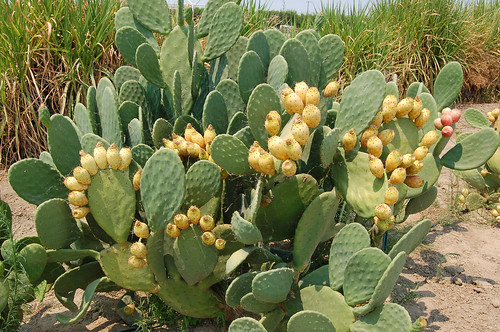
This post is part of the Science Tuesday feature series on the USDA blog. Check back each week as we showcase stories and news from USDA's rich science and research portfolio.
It’s hard to believe that ancient seas once covered a large part of California’s San Joaquin Valley—until you check the soils.
That’s when you’ll discover that those seas left behind marine sediments, shale formations and deposits of selenium and other minerals in the soil. Crops grown in the valley must be irrigated, but the runoff irrigation water can carry high levels of selenium that can be toxic to fish, migratory birds and other wildlife that drink from nearby waterways and drainage ditches.
Agricultural Research Service (ARS) scientists say there’s a tool to “scrub” the valley’s soil, and it couldn’t be more natural: It’s the prickly pear cactus. Prickly pear soaks up selenium from the soil and volatilizes it—that is, causes it to evaporate, thus reducing the likelihood that the mineral will wind up in water.
To find the best soil scrubber, the ARS scientists first conducted greenhouse studies to evaluate the ability of different varieties of prickly pear to tolerate poor soils. Then they spent three years evaluating five prickly pear varieties from Mexico, Brazil and Chile for salt- and boron-tolerance in selenium-laden soils gathered from the area and piled into test plots. They also used drip irrigation that produced very little runoff.
It’s always been thought that prickly pear was sensitive to high salinity, and the tests did show that the plants in the test plots were smaller and produced less fruit than those grown in cleaner soils. But the results showed that prickly pear still grew reasonably well in the poor quality soils—and with very little water.
The best “cleaners” were the Chilean cacti, which were tops at accumulating and volatilizing the selenium, producing the most fruit and tolerating the salt and boron. Now the scientists are pinpointing which prickly pear varieties have the brightest future as bioremediation tools.
